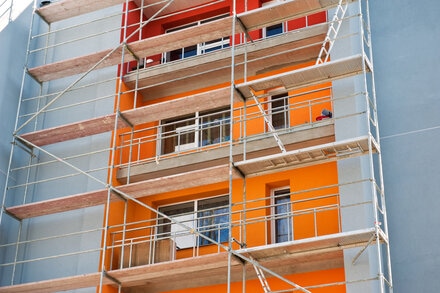
x
Andrew LaSalla
Andrew LaSalla II is one of the most trusted financial consultants in the residential and commercial lending business. With over seven years of of property loan underwriting experience, Andrew's sole focus is helping clients successfully navigate complex financial laws, terms, rules, paperwork, and transactions necessary to secure loans for new construction, purchase, or refinancing of multifamily, healthcare, affordable housing and student housing properties. Whether it's HUD, FHA, or MAP loans, Andrew is committed to tailoring financial solutions for every client he serves.
In March of 2020, the Department of Housing and Urban Development (HUD) revised its policy regarding the refinancing or purchase of existing properties under the 223(f) program.
How Have 223(f) Policy Requirements Changed?
Prior to the recent revision, HUD did not allow any new construction or substantially rehabilitated projects to qualify for 223(f) financing unless three years had passed. Applicants were required to show three years of stabilized operating statements post construction or after the completion of the substantial rehabilitation.
HUD is now accepting applications once certain program requirements and guidelines are met.
The changes enable multi-family apartment owners to make the most of currently low rates. They can refinance stabilized properties shortly after construction or substantial rehabilitation, as opposed to waiting for three years to pass. These changes will also benefit many affordable housing projects.
New Program Requirements to Secure 223(f) Financing
There are several qualification thresholds that multifamily apartment projects must meet once a construction or substantial rehabilitation is completed, in order to secure financing.
- A certificate of occupancy is required.
- Certain Debt Service Coverage Ratios must be met. According to the Mortgagee Letter of March 2020, projects “must evidence a minimum Debt Service Coverage Ratio (DSCR) of 1.17 (on the requested insured loan) for market rate projects and 1.11 for projects meeting the definition of Broadly Affordable for a period of three consecutive months prior to loan endorsement.”
Additionally, the borrower must provide:
- Records of income and expenses, starting at initial occupancy.
- Estimates of income and expenses for the upcoming 12-month period.
- Reports detailing current rents and rents that enabled the current mortgage.
- Lease histories and projections will also be required.
- Any rent discounts or concessions that were enabled to assist in the lease up must be disclosed.
- Whether the DSCR is declared to be achieved will be based on actual revenue collected, minus normalized expenses.
This program allows cash out up to 80%. However, until the apartment building achieves the Minimum Debt Service Coverage requirements for a minimum of 6 months, the lender will hold back 50% of the cash out total.
New Asbestos, Lead and Radon Testing Requirements
There were also key changes made to the newly released 2020 HUD MAP Guide that relate to testing for asbestos, lead based paint and radon.
Asbestos and Lead Based Paint
Previously, multifamily projects that were constructed prior to 1978 required testing for asbestos and lead based paint. HUD now requires asbestos and lead based paint testing to be conducted on all multifamily buildings constructed before 1989.
Radon
The new guidelines also implement an increase in radon testing. These requirements call for radon testing on 100% of ground floor units, and 10% of units above the ground floor. The previous requirements only called for 25% of ground floor units to be tested.
Secure Your HUD 223(f) Financing
If you are a borrower that has recently completed a new construction or substantially rehabilitated a project and have received your certificate of occupancy, now is a great time to see if the HUD 223(f) program is right for you. LSG Lending Advisors can work with you to determine if your project qualifies for this program. Contact us today to get started.